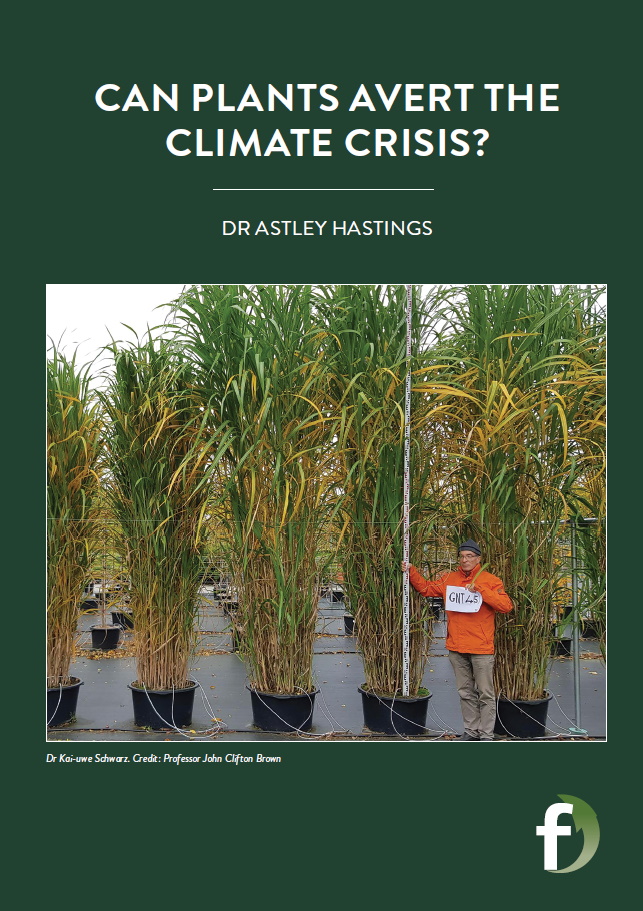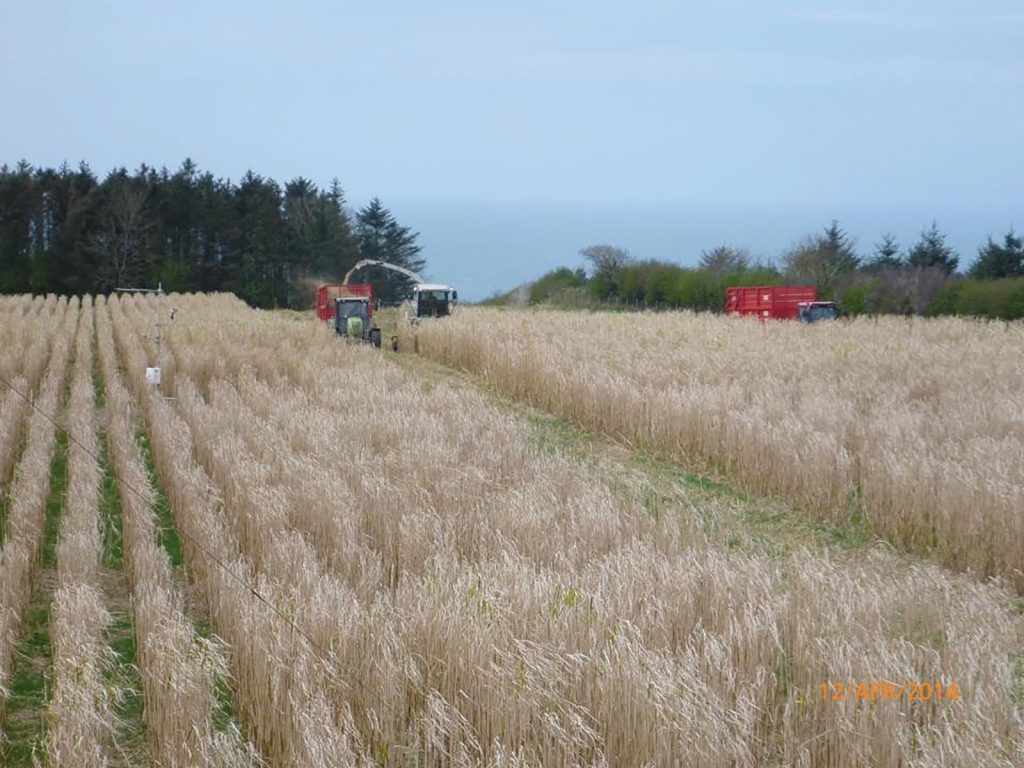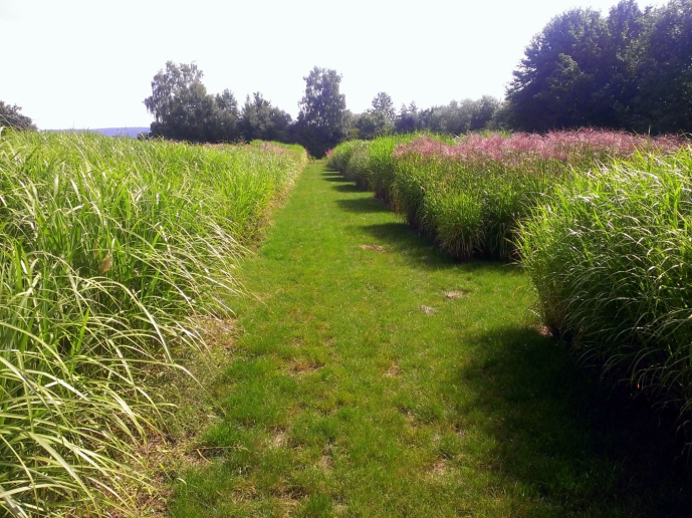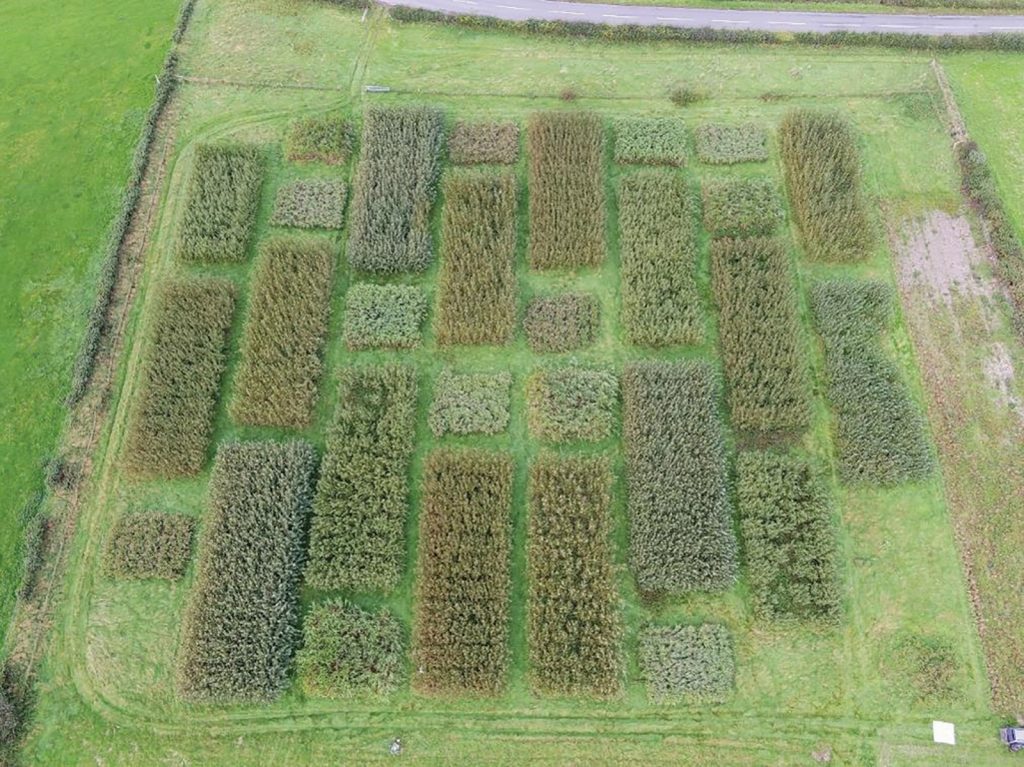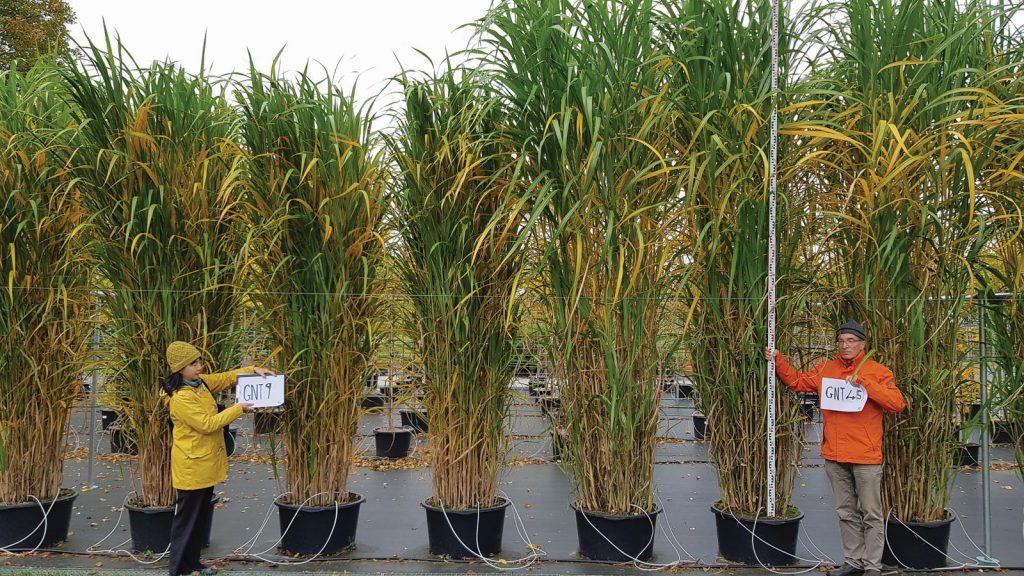Can plants avert the climate crisis?
Grow plants, burn them for energy, then bury the carbon deep underground. This is the principle behind biomass energy with carbon capture and storage, but how effective can it be in the real world? Dr Astley Hastings, from the University of Aberdeen, has been investigating
TALK LIKE AN ENVIRONMENTAL SCIENTIST
FOSSIL FUELS – materials made over millions of years from decomposed plants and animals that are burnt to produce energy
HYDROCARBONS – chemical compounds that contain the elements carbon and hydrogen
AFFORESTATION – the planting of new forests
BIODIVERSITY – the variety of life and number of species on Earth, which is currently in decline
Our planet is getting warmer. You will have seen in the news that this is already causing sea level rise, extreme floods, heatwaves and wildfires around the globe. The good news is, we know exactly what we need to do. To stop climate change from running out of control, we need to stop increasing the amount of carbon dioxide in the atmosphere.
To stabilise carbon dioxide, we need to change the way we generate our energy. This means leaving behind fossil fuels for new technologies such as wind turbines, solar panels and something called Biomass Energy with Carbon Capture and Storage (BECCS). But how do we find the right mix of these technologies, ensure we have enough energy, and minimise our impact on the environment? Dr Astley Hastings, a researcher at the University of Aberdeen, has been looking at the potential of BECCS in the UK and around the world, to help us answer exactly that.
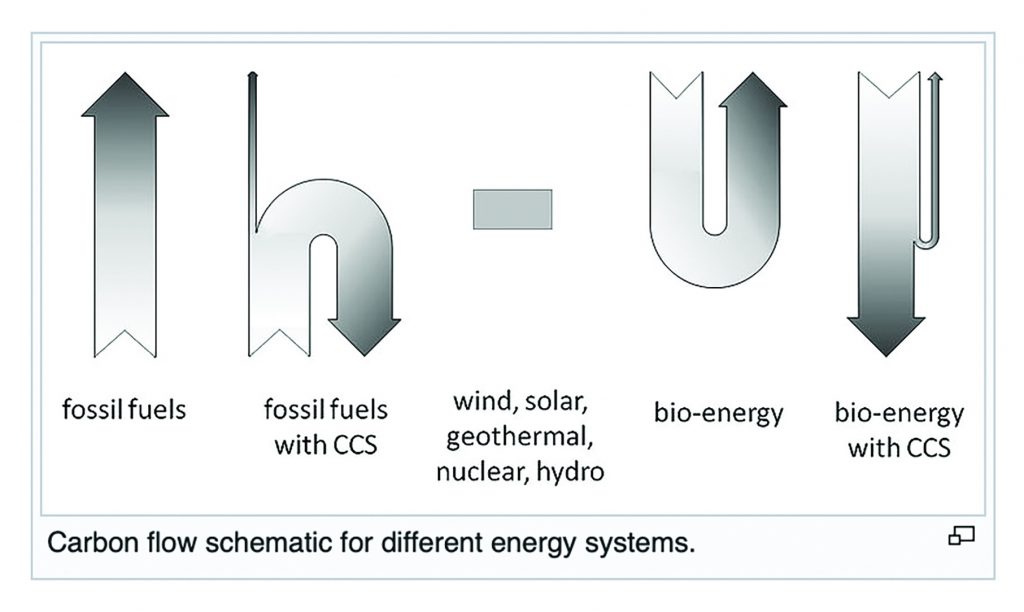
Carbon flow schematic for different energy systems. CCS stands for carbon capture and storage.
HOW DOES BECCS WORK?
As with almost all energy sources on Earth, BECCS ultimately relies upon the sun. Plants use the energy of the sun to capture carbon dioxide from the air. In this process (called photosynthesis) the carbon is used to build the roots, stems and leaves of the plant. Collectively, this material is known as biomass. If you have ever made a campfire or lit a woodburning stove, then you have used biomass energy. When biomass burns, the energy stored up during photosynthesis is released as heat and light, which we can then use to generate electricity. At the same time, the carbon stored in the biomass is converted back into carbon dioxide. Overall, biomass energy reduces carbon dioxide in the atmosphere while the biomass is growing, then increases it by the same amount when the biomass is burnt.
What if we could stop that carbon dioxide from going back into the atmosphere? This is the idea behind carbon capture and storage. Chemicals called amines can be used to separate carbon dioxide from other gases released at a biomass power station. Following this, it can be stored by sealing it into rocky reservoirs deep under the ocean. That way, BECCS can produce useful energy while also reducing atmospheric carbon.
WHY DO WE NEED BECCS?
Imagine there is a leak in your roof, and you have put a bucket underneath to catch the water coming through. You are trying to fix the leak, but the bucket is nearly full and some drips are still coming through. What will you do? You will probably think of a way to remove water from the bucket before it overflows. This is a bit like our situation with carbon dioxide in the atmosphere. To halt climate change, we must keep carbon dioxide below a certain level. The best way to do this is simply to stop adding more, but there are some emissions that are difficult to get rid of, and we are starting to run out of time. Therefore, in addition to reducing emissions, we need to use technologies such as BECCS that actively remove carbon dioxide from the atmosphere.
TOOLS OF THE TRADE – SPATIAL MODELS AND LIFE CYCLE ASSESSMENTS
Astley has two important tools for researching the potential of BECCS. The first of these is spatial modelling, which he uses to estimate how much carbon can be captured by plants around the world. A scientific model is a set of equations and logic called algorithms, designed to mimic the behaviour of nature. For example, an algorithm inside Astley’s models could be an equation that calculates the growth rate of a species of plant based on rainfall levels, hours of sunshine, and soil fertility and wetness. Each algorithm inside the model is based on scientific experimentation, and coded into a computer program. Given a set of input information – for example, climate and soil type – the computer program can apply the algorithms to predict what the modeller is interested in, such carbon accumulation.
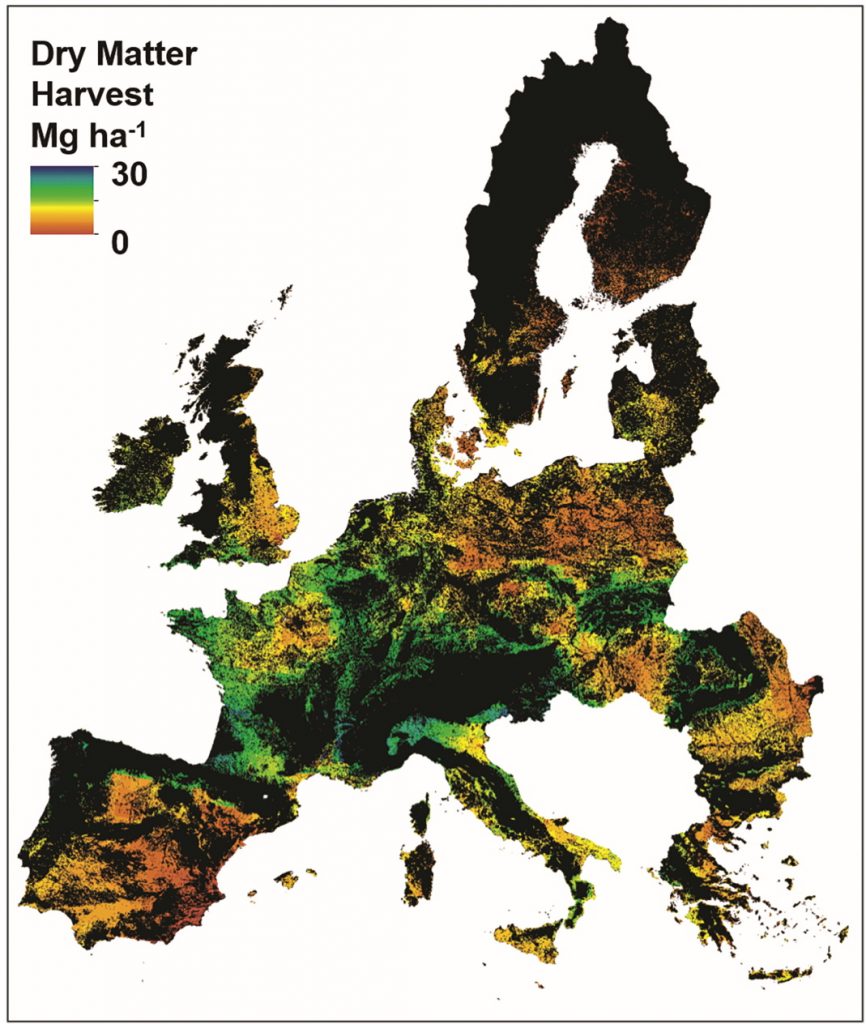
A map of where miscanthus can grow in Europe and its yield
The second important tool is life cycle assessment (LCA), which Astley uses to find the overall impact of BECCS on the environment. The idea behind LCA is to make sure absolutely everything is accounted for. In the case of BECCS, this means producing seeds, ploughing the soil, sowing the seeds, protecting the plants from weeds and insects, harvesting, transporting the biomass, generating electricity, transporting the captured carbon dioxide, and securely storing it offshore. For each step of the processes, the impacts of energy usage, materials, equipment and waste are all added up.
Reference
https://doi.org/10.33424/FUTURUM214
FOSSIL FUELS – materials made over millions of years from decomposed plants and animals that are burnt to produce energy
HYDROCARBONS – chemical compounds that contain the elements carbon and hydrogen
AFFORESTATION – the planting of new forests
BIODIVERSITY – the variety of life and number of species on Earth, which is currently in decline
To stabilise carbon dioxide, we need to change the way we generate our energy. This means leaving behind fossil fuels for new technologies such as wind turbines, solar panels and something called Biomass Energy with Carbon Capture and Storage (BECCS). But how do we find the right mix of these technologies, ensure we have enough energy, and minimise our impact on the environment? Dr Astley Hastings, a researcher at the University of Aberdeen, has been looking at the potential of BECCS in the UK and around the world, to help us answer exactly that.

Carbon flow schematic for different energy systems. CCS stands for carbon capture and storage.
HOW DOES BECCS WORK?
As with almost all energy sources on Earth, BECCS ultimately relies upon the sun. Plants use the energy of the sun to capture carbon dioxide from the air. In this process (called photosynthesis) the carbon is used to build the roots, stems and leaves of the plant. Collectively, this material is known as biomass. If you have ever made a campfire or lit a woodburning stove, then you have used biomass energy. When biomass burns, the energy stored up during photosynthesis is released as heat and light, which we can then use to generate electricity. At the same time, the carbon stored in the biomass is converted back into carbon dioxide. Overall, biomass energy reduces carbon dioxide in the atmosphere while the biomass is growing, then increases it by the same amount when the biomass is burnt.
What if we could stop that carbon dioxide from going back into the atmosphere? This is the idea behind carbon capture and storage. Chemicals called amines can be used to separate carbon dioxide from other gases released at a biomass power station. Following this, it can be stored by sealing it into rocky reservoirs deep under the ocean. That way, BECCS can produce useful energy while also reducing atmospheric carbon.
WHY DO WE NEED BECCS?
Imagine there is a leak in your roof, and you have put a bucket underneath to catch the water coming through. You are trying to fix the leak, but the bucket is nearly full and some drips are still coming through. What will you do? You will probably think of a way to remove water from the bucket before it overflows. This is a bit like our situation with carbon dioxide in the atmosphere. To halt climate change, we must keep carbon dioxide below a certain level. The best way to do this is simply to stop adding more, but there are some emissions that are difficult to get rid of, and we are starting to run out of time. Therefore, in addition to reducing emissions, we need to use technologies such as BECCS that actively remove carbon dioxide from the atmosphere.
TOOLS OF THE TRADE – SPATIAL MODELS AND LIFE CYCLE ASSESSMENTS
Astley has two important tools for researching the potential of BECCS. The first of these is spatial modelling, which he uses to estimate how much carbon can be captured by plants around the world. A scientific model is a set of equations and logic called algorithms, designed to mimic the behaviour of nature. For example, an algorithm inside Astley’s models could be an equation that calculates the growth rate of a species of plant based on rainfall levels, hours of sunshine, and soil fertility and wetness. Each algorithm inside the model is based on scientific experimentation, and coded into a computer program. Given a set of input information – for example, climate and soil type – the computer program can apply the algorithms to predict what the modeller is interested in, such carbon accumulation.

A map of where miscanthus can grow in Europe and its yield
The second important tool is life cycle assessment (LCA), which Astley uses to find the overall impact of BECCS on the environment. The idea behind LCA is to make sure absolutely everything is accounted for. In the case of BECCS, this means producing seeds, ploughing the soil, sowing the seeds, protecting the plants from weeds and insects, harvesting, transporting the biomass, generating electricity, transporting the captured carbon dioxide, and securely storing it offshore. For each step of the processes, the impacts of energy usage, materials, equipment and waste are all added up.
HOW MUCH CARBON CAN BECCS CAPTURE IN THE UK?
One of the tasks for Astley and his research team is to find out exactly how big a role BECCS can play in slowing climate change, and they have discovered that the UK may need to reduce its expectations. As part of its plan to reach net zero by 2050, the UK set a target to capture and store 50 megatonnes of carbon dioxide each year. That would be enough to fill 10 million swimming pools, even when pressurised into liquid form. However, to achieve this, a huge area of good quality agricultural land (3% of the country) would need to be converted for biomass production. In fact, Astley discovered that only half of the 50 megatonne target could be reached sustainably, considering the limited space the UK has for growing food as well as biomass.
IS THERE A ROLE FOR THE OIL AND GAS INDUSTRY?
Scientists agree that fossil fuels need to be phased out soon, but Astley believes that oil and gas companies will still play an important role in the future. For BECCS to be effective, the carbon will need to be securely trapped in rocky reservoirs deep under the sea. This kind of operation will require strong expertise in geology and engineering, as well as industrial-scale offshore machinery, and here is where the fossil fuel industry can help. As we make the move away from fossil fuels, the industry could change its focus from producing hydrocarbons to using its skills to remove carbon dioxide from the atmosphere instead.
ARE THERE OTHER WAYS IN WHICH PLANTS CAN TACKLE CLIMATE CHANGE?
The UK is already making use of biomass energy at Drax Power Station in North Yorkshire. However, BECCS is not the only way in which plants can help us remove carbon dioxide from the atmosphere. For example, growing trees, then using the wood for construction means the carbon becomes locked up in the beams of buildings. Instead of growing plants specifically for biomass energy, waste products from agriculture and the timber industry can be burnt instead. Furthermore, afforestation and protecting old forests are ways to absorb carbon while also protecting biodiversity.
These plant-based solutions are all part of the climate change puzzle, but Astley stresses that “land is the limiting factor”. In a world where we also have billions of people to feed, and vital ecosystems to protect, BECCS will need to be accompanied by a sharp drop in carbon emissions over the coming decades and that will require all of us consuming less and being conscious that everything we do or buy causes emissions.
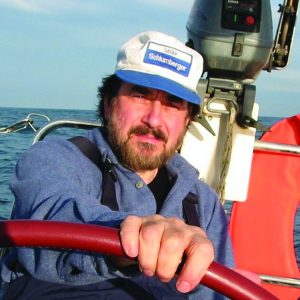 DR ASTLEY HASTINGS
DR ASTLEY HASTINGS
Reader
University of Aberdeen, UK
FIELD OF RESEARCH: Environmental Science
RESEARCH PROJECT: Investigating how much carbon can be captured by plants in different climates and soils around the world to help predict the potential of Biomass Energy with Carbon Capture and Storage (BECCS)
FUNDER: Natural Environment Research Council
 DR ASTLEY HASTINGS
DR ASTLEY HASTINGS
Reader
University of Aberdeen, UK
FIELD OF RESEARCH: Environmental Science
RESEARCH PROJECT: Investigating how much carbon can be captured by plants in different climates and soils around the world to help predict the potential of Biomass Energy with Carbon Capture and Storage (BECCS)
FUNDER: Natural Environment Research Council
ABOUT ENVIRONMENTAL SCIENCE
How do the materials we use, the chemicals we produce and the energy we consume affect the Earth’s atmosphere, land and oceans, as well as the web of living creatures it supports? This is the broad question that environmental scientists tackle, by bringing together expertise from fields including engineering, geoscience, geography, ecology, biology, physics and chemistry.
WHY DO WE NEED ENVIRONMENTAL SCIENTISTS?
You have probably heard of many environmental problems: the widening of the ozone hole, acidic rain, oil spills and air pollution are just a few examples. When things go wrong, we put our own health and well-being at risk, as well as that of other species. The job of environmental scientists is to identify these risks, monitor them, and search for sustainable solutions. Unfortunately, environmental problems are becoming more common and more severe, with climate change and biodiversity loss being the two most critical examples. That is why environmental scientists will have such an important role in the future.
WHAT DO ENVIRONMENTAL SCIENTISTS DO?
Because environmental science covers such a broad range of disciplines, the job could include all sorts of things on a day-to-day basis. While some environmental scientists are measuring ice depths in Antarctica, others will be flying drones over agricultural fields, counting bats, performing experiments in the lab, evaluating the impact of industry, mining and construction on the environment or running computer simulations. On top this, environmental scientists will spend time analysing their data, drawing graphs and writing up their results.
EXPLORE A CAREER IN ENVIRONMENTAL SCIENCE
• The Natural Environment Research Council (NERC), which funds environmental research, has videos of environmental scientists explaining what life is like in their chosen careers: nerc.ukri.org/skills/careers/scientist
• Target Careers lists such a broad range of careers in environmental science that it is difficult not to be inspired! targetcareers.co.uk/careers-advice/choosing-your-career/894159-environmental-careers-and-how-to-get-them
• Prospects offers some great tips on how to get an environmental job: www.prospects.ac.uk/jobs-and-work-experience/job-sectors/environment-and-agriculture/how-to-get-anenvironmental-job
• The future carbon capture industry will create new jobs in the coming years.
• Afforestation will require foresters to manage the trees, carpenters to use the wood, architects to design sustainable buildings and engineers to design forestry machinery and wood manufacturing processes.
• BECCS will involve plant breeders, biologists and farmers in growing the crops, as well as engineers with specialities in harvesting machinery, power plants, pipelines and offshore drilling.
• Most environmental scientists will come to this discipline during their PhD or after working in industry.
• The first step after school is usually to do an undergraduate degree in ecology, engineering (like Astley), biology, physics, chemistry, maths, computer science, geology or geography.
• To apply for these degrees, you will need to study maths and science subjects at school but remember that writing and creative skills are also important.
HOW DID ASTLEY BECOME AN ENVIRONMENTAL SCIENTIST?
DID YOU ALWAYS KNOW YOU WANTED TO BE AN ENGINEER WHEN YOU WERE YOUNGER?
No, my first career choice was to join the navy, for which I needed to study STEM subjects. But as I was doing A-levels in physics chemistry, history and maths I became more interested in science and its applications. I was also interested in how stuff worked, so I changed course, got a student apprenticeship in mechanical engineering, and eventually became a chartered engineer.
WHY DID YOU MAKE THE MOVE FROM MECHANICAL ENGINEERING TO ACADEMIA?
I was always interested in the environment, and it became more and more important from an industrial point of view to make the working environment safer and more pleasant. I also saw a gap in scientists’ understanding of the practicalities of industry needing to provide food, goods and services to the population. With my engineering background I thought I could help to bridge that gap, so I studied for an MSc then a PhD in environmental science.
ARE YOU CONFIDENT THAT WE WILL BE ABLE TO KEEP THE GLOBAL TEMPERATURE WELL BELOW 2 °C ABOVE PRE-INDUSTRIAL LEVELS?
No, I worry it will be hard for China, Brazil and India (and some other developing countries) to continue industrialising and improving living standards while reducing carbon emissions.
WHAT DO YOU DO, AT AN INDIVIDUAL LEVEL, TO LESSEN YOUR IMPACT ON THE ENVIRONMENT?
I only fly for work, and I only eat meat twice a week. I have also installed a wind turbine and heat pump at my house, and generally try to drive as little as possible: I worked from home even before the COVID-19 lockdown!
WHAT DO YOU LOVE ABOUT YOUR WORK?
I love doing science research, transferring science to practice and mentoring my students.
Do you have a question for Astley?
Write it in the comments box below and Astley will get back to you. (Remember, researchers are very busy people, so you may have to wait a few days.)

